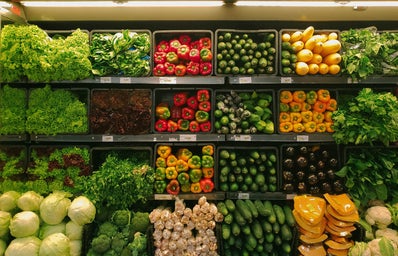Learning how to budget in college is such an important skill that can be used in pretty much every area of your life. Although budgeting itself is rather tedious, stressful at times, and requires discipline, it is really rewarding in the long run to help lead to financial freedom. This past week, I re-analyzed my grocery budget after falling out of the routine from winter break. I historically spent roughly $30-40 a week, but I wanted to challenge myself to see if I could stay towards the $30 dollar mark — here’s how I did it!
- Meal Plan (as much as possible)
-
Meal planning allows me to start thinking about what ingredients I need to buy. It also makes buying in bulk easier, which is extremely cost effective. Since I am a creature of habit, most of my meals are the same everyday. My typical breakfast is overnight oats, so I always make sure I’m stocked with those ingredients. For lunches and dinners, I’m a big fan of making fun salads, grain bowls, or pasta. My goal is to always have a balanced meal with carbs, fats, and protein. Once I have an idea of what meals I’ll want throughout the week, I start making a list.
- Make a list- and stick to it!
-
So, making the list is easy, but sticking to it is always so tricky. I tend to categorize my list by produce, protein, snacks, beverages, freezer stuff, etc. Doing this in tandem with meal planning helps me visualize the things I need/want and helps me stick to what is only on the list. This also prevents me from buying the same thing that I may not necessarily need.
- Saving Tips:
-
Buying sources of protein can be kind of pricey so I try to either find it on sale, find alternatives, or meal plan enough that the protein I buy can be made into many meals. I typically buy a few cans of beans, edamame, or tofu if I’m being financially conscious. Another thing I do is buy lean ground turkey because I can use it in so many different meals like chipotle bowls, tacos, pasta dishes, or even salads. Another little tip I have is to buy frozen berries/fruit, and vegetables. Most often frozen produce has more nutritional value, is cheaper, and you don’t have to worry about it spoiling too quickly! Oh, and one last thing — become a member of your favorite grocery store if they have the option because they offer pretty good deals each week!
My List This Week:
Store: Trader Joe’s (my comfort grocery store)
Produce:
- bananas
- 2 bell peppers
- baby carrots
- spring mix
Protein:
- can of black beans
- can of chickpeas
Snacks:
- hummus
- peanut butter
- 2 Z-Bars
Frozen Foods:
- corn
- pineapple
Beverages:
- ice coffee concentrate
Sticking to this budget was definitely a little trickier than I anticipated, but it did make me think more about the foods I was buying and why/how I was going to use the food. Because everything I bought had to fit within this $30 budget, I think I made more conscious choices and read the ingredients more carefully because I had a goal. Although this list is small and may not seem like enough, it was plenty to get me through the week because I obviously used these groceries with the things I already had at home.
Can’t get enough of HC UMass Amherst? Be sure to follow us on Instagram, listen to us on Spotify, like us on Facebook, and read our latest Tweets!


